Tis the season to plant garlic (at least here in South East Michigan)! This post will talk about some tips and techniques for planting garlic in your organic garden. I planted garlic for the first time a year ago, and it was a very easy crop–no hassle, no pests, and tasted amazing. I learned quite a bit more about planting garlic this year from my good friend and Oakland University Student Organic Farm manager, Jared….so thank you, Jared for teaching me about garlic this season!
Garlic is a crop planted in the fall, and typically harvested in July (for bulbs, the scapes come about a month earlier). In my region, the best time to plant garlic is now–in mid October.
1. Read up on garlic. One of the things you want to spend time doing when you are preparing to plant any crop is to read and learn about the plant. One place to learn this is from High Mowing Seeds, where they describe things like plant depth, row spacing, days to harvest, etc. From their site, we learn a lot about row spacing and mulching, which are important for our work now.
2. Prepare your bed. You should try to prepare your bed a week in advance; this allows your soil to settle in preparation for planting. For my bed, I weeded it and pulled out all the old material (I had amaranth and malabar spinach growing in the bed previously), then I added compost and aerated the soil a bit with a garden fork. I let the bed rest for one week.
3. Obtain some garlic. Like potatoes, when you plant a garlic clove, you will actually be cloning the plant. I have a few varieties of garlic that I plant each year–all of it was obtained either from friends or from the farmer’s market.
4. Split your garlic into cloves. Your cloves should have as much of the skin as possible; this protects them. There is a garlic “root crown”, or the thing that attaches the garlic to the base, should be preserved.

5. Prepare your trenches. I planted my garlic every 6″ in rows 12″ apart. You can use your rake to make nice long trenches. Since I have 4′ garden beds, I created three rows of garlic (I am planting a 4′ x 10′ area).
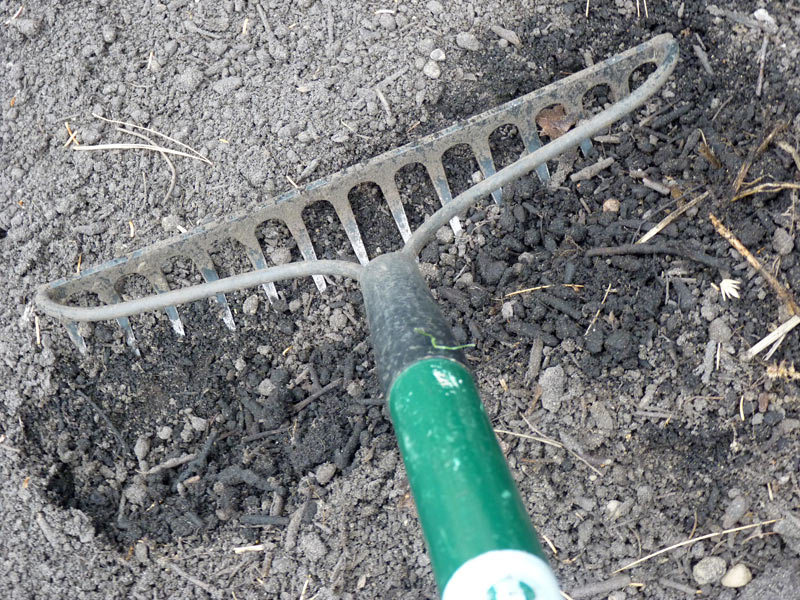
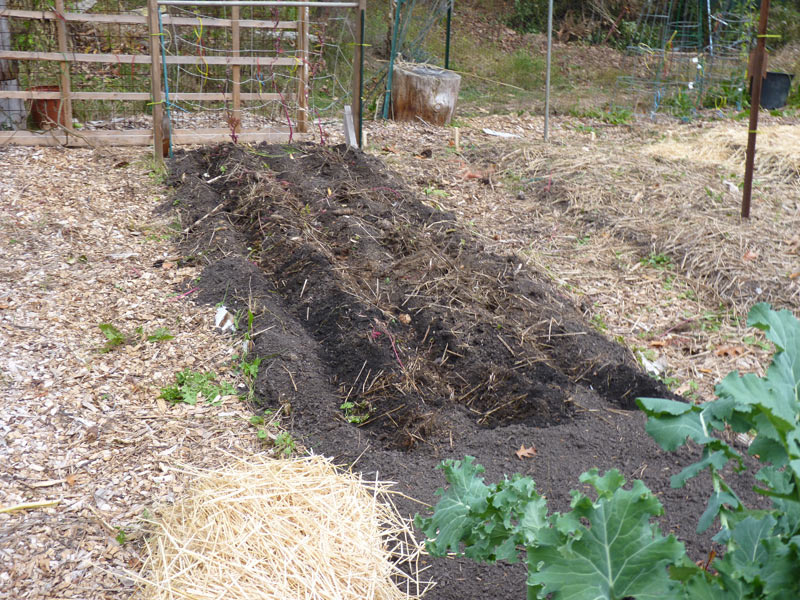
6. Plant your garlic. I used the back of a rake to get down 2″, then sunk the garlic into the bottom of the trench (root crown down). You can use “finger spacing” to plant your garlic easily–you’ll see me measuring with my fingers (since I know their length is 7″ across, so slightly less than their full length) to plant each garlic bulb.
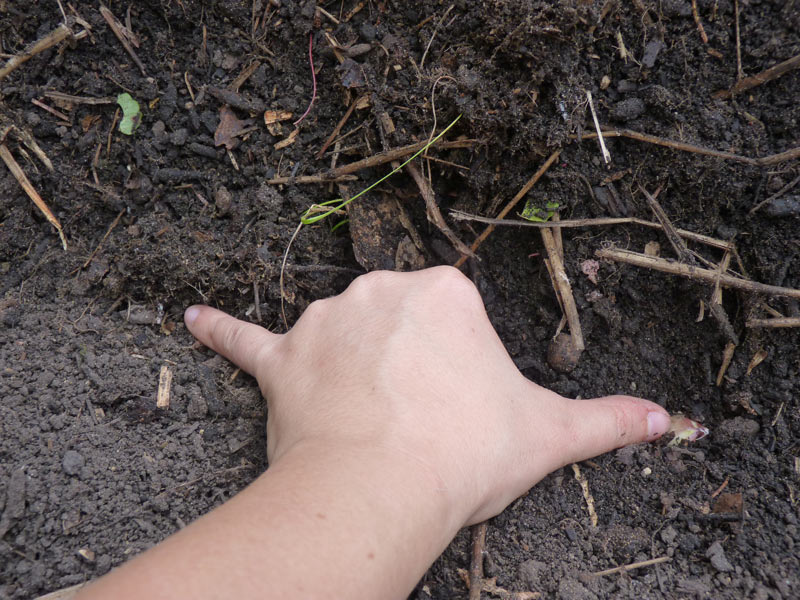
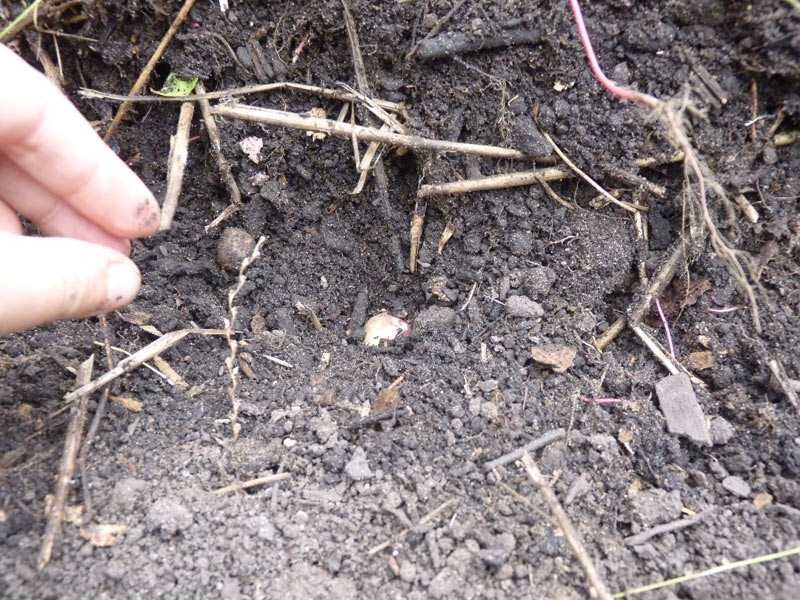
7. Cover up your garlic. You can use the back of your rake to fill in the trenches and smooth out your bed. When you smooth out the bed, you make sure there aren’t pockets where water will lay or run off.
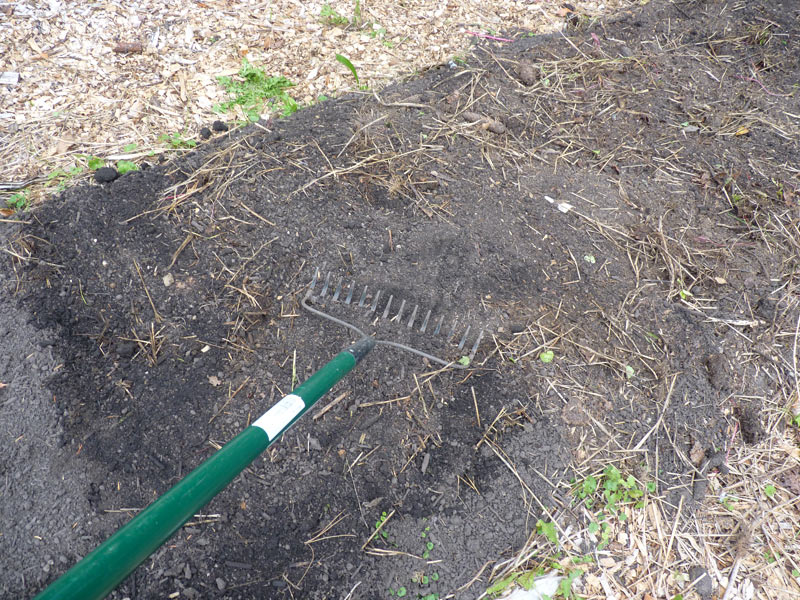
7. Mulch your garlic. I straw mulched my garlic with about 4″ of straw—this gives it a wonderful barrier for the snow to come and also helps hold moisture in and prevents erosion from blowing, etc.
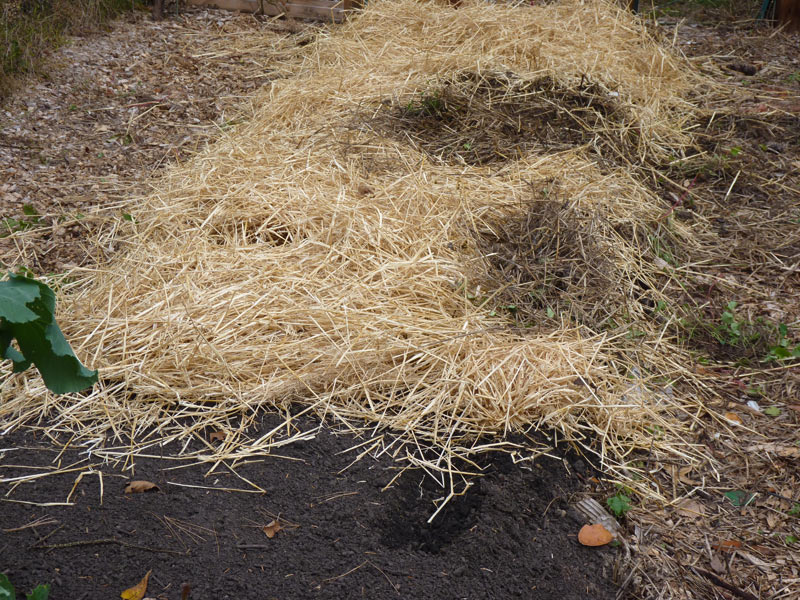
8. Wait and watch. Your garlic is planted, and other than a bit of compost early in the spring, doesn’t really need much attention throughout the season. In approximately 150-200 days, or sometime around July, your garlic will be ready!
Garlic is certainly a lesson in patience and planning ahead…but its a wonderful way to start your garden for next season. I love the fact that I am already planting my garden for next season!
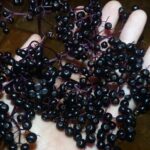

The bees love my garlic flowers and I have counted many more honey bees this year. Their honey probably isn’t great tasting, but they are healthier. Also, garlic in the garden helps to keep moles out.
Yes, all so true! I haven’t tried honey from garlic yet, but I bet it has an interesting taste…haha! You can also eat the scapes, which I find really exciting!
I love this post! Today I actually found some garlic sprouting in my compost bin, so I decided to just plant it. I have no idea how it’ll turn out, but it was worth a shot! I also live in Florida, so it might be the complete wrong time of year. I hope you get delicious cloves!
What kind of garlic is it? I can only plant hard-neck garlic here because of the cold. I know they grow soft neck garlics in California; my guess is that info on planting soft neck garlic would be very helpful for you! Best of luck!
I wish I knew! I’ll be posting about it I’m sure, so maybe you can help me identify it. 🙂
I had no idea how or when garlic was grown until I read this post, fascinating stuff! Dont have the land this year to plant anything of my own, but it certainly doesn’t hurt to get some education on it in the meantime. I’ve thought about asking neighbors with large yards if they might let me “rent” a corner for a small garden.